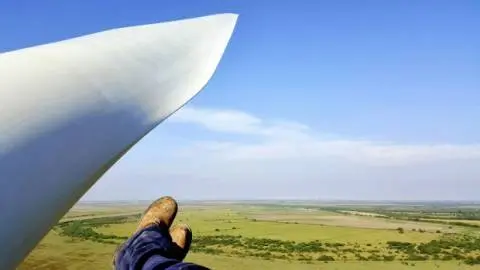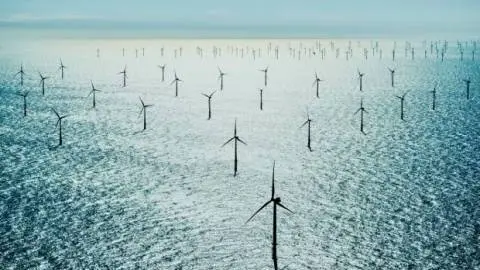Solid growth for wind and solar
Covid-19 has had little impact on the growth prospects for wind and solar. The European wind and solar markets are expected to provide solid growth of 8% and 13% in 2021 in terms of capacity additions, which will require €60bn of investment
On the supply side, wind and solar continue to benefit from policy support for green local power systems. On the demand side, we expect power demand to increase by 3% in 2021, although the extension of lockdown periods and delays to the vaccine rollout could lead to stagnation.
Power demand: on the rise again
Eurozone power demand took a hit of c.5% in 2020 as a result of the lockdown measures. Heavy power users in manufacturing, transportation (notably railways) and commercial real estate (offices) required less power as a result. Increased power demand from working from home could only partially compensate for these declines.
The shape of the economic recovery will determine power demand in 2021. Economic growth depends critically on the evolution of the coronavirus and the vaccine rollout. ING’s base case scenario assumes that lockdowns are alleviated in 1Q21, but social distancing remains the norm for much longer in 2021. We believe a handful of vaccines will be available and rolled out in 1H21. In this scenario the eurozone economy is expected to grow by 3.5% in 2021 and power demand by c.3%, mostly driven by the manufacturing sector. Currently, downward risk is mounting with the emergence of a virus mutation in the UK that is more contagious. If the virus lengthens the current lockdown period, reignites a third lockdown later this year, or if the vaccine rollout takes longer, the eurozone economy could shrink by -0.5% in 2021. In that case, power demand would be flat in 2021. On the upside, rapid testing capability and faster vaccine availability could boost economic growth to 6.1%, resulting in power demand growth of c.4%-5% in 2021.
Power demand increasingly decoupled from economic growth in the years before the outbreak of the Covid-19 pandemic. In 2018-2019, power demand fell while the eurozone economy grew by 1.3 to 1.9%. Increased energy efficiency and the large share of services in the economy made the economy less power dependent. And electrification of energy-intensive sectors, such as manufacturing and the built environment, is not expected to lift power demand considerably before 2025. Covid-19 has temporarily put a brake on this decoupling process. Lockdowns, and the resulting recovery phase, are causing power demand and economic growth to move in tandem again.
Power supply: Ireland, the Iberian region, UK and Germany are most dependent on wind and solar
Over the year, up to a third of power comes from wind and solar in Ireland, Spain and Portugal (the Iberian region), the UK and in Germany. During the year, on a daily or hourly basis, shares can range from almost zero to over 100% depending on local weather conditions and power demand.
Countries so far have taken different strategies regarding wind and solar. In the Benelux countries and Ireland, much more power comes from solar panels than from wind turbines. In the Nordics and the UK - and even in sunny countries like France, Spain and Portugal - more power is generated with wind turbines compared to solar panels.
Globally, the wind market is an onshore market, as around 80% of wind power is generated on land, but again this varies from country to country. In Europe, onshore wind power dominates in Germany, France, Italy, Ireland and the Iberian and Nordic regions. In the UK and the Netherlands, wind comes equally from on- and offshore windfarms, whereas in Belgium, almost all the wind power is generated offshore.
€60bn investment in wind and solar anticipated for 2021
The European wind and solar markets are expected to provide solid growth of 8% and 13% in 2021 in terms of capacity additions. In absolute terms, capacity additions are largest in the onshore wind sector (13 GW) and for small scale solar projects (12 GW). In the offshore wind sector c.2GW of capacity will be added in 2021. That is relatively small compared to the other segments, but policymakers in the Nordics, UK, Ireland, Germany and the Netherlands continue to work on special planning for offshore wind farms and grid infrastructure. So more is about to happen in the coming years for offshore wind farms. All in all, we expect to see c.35 GW growth in the combined wind and solar market, which will require €60bn of investment.
This article is part of our Energy Outlook 2020. You can read the full report here.
Download
Download article
15 January 2021
More power, flower This bundle contains 10 articlesThis publication has been prepared by ING solely for information purposes irrespective of a particular user's means, financial situation or investment objectives. The information does not constitute investment recommendation, and nor is it investment, legal or tax advice or an offer or solicitation to purchase or sell any financial instrument. Read more

